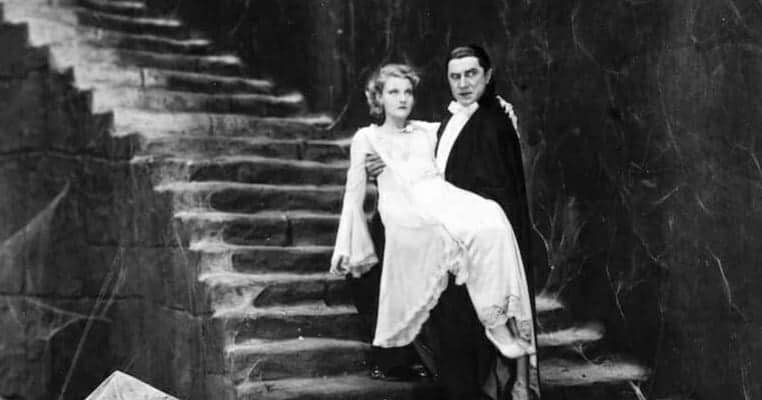The first shared fictional universe in film was created by Universal Pictures near the end of the era of silent films, when two films starring Lon Chaney Sr. thrilled audiences. They were followed by the 1931 “talkie” Dracula, starring Bela Lugosi in the title role. Frankenstein, with Boris Karloff in the role of Mary Shelley’s man-made man, followed later that same year. The following year Karloff returned as The Mummy. Sequels of all three followed, and later films found many monsters, mad scientists, and other evil characters appearing with each other.

In the 1940s The Wolf Man appeared, with Lon Chaney Jr. appearing as Lawrence Talbot, doomed to turn into a werewolf when the wolfbane bloomed. In 1943 Chaney’s Wolf Man appeared in a film in which he met and battled Frankenstein’s monster, this time played by Bela Lugosi. The classic monsters appeared in film after film, nearly always being destroyed at the end, only to be resurrected in further sequels. Eventually, they entered the American pantheon of film legends, appeared in comic books and magazines, pulp fiction, as caricatures of themselves, and of others. They remain there today. Here is the story of the Classic Universal Monsters of film and American legend.

1. It started with Bela Lugosi and Dracula in 1931
Horror films had been well-received during the silent era, with 1922’s Nosferatu still considered a classic film, as well as the first filmed version of Bram Stoker’s gothic vampire novel Dracula. The 1931 film which starred Bela Lugosi and which created the classic image of the vampire, dressed in evening wear and protected with a cape-like cloak, was based on both Stoker’s novel and a successful play. Lugosi was not desired by the producers for the film, it took extensive lobbying for the part by the actor, supported by his strong reviews for the role in the play, for him to receive the iconic role.
The scenes in which Lugosi descended upon his victims were presented to the audience in silence, with no supporting background music, which added to the tension. Newspaper reviews of the film’s debut at the Roxy Theater in New York reported audience members fainting from shock. Lugosi was widely praised as well, and for the rest of his life, he would not be able to separate himself from the role. Lugosi’s performance created the popular image of the vampire which remains that of the collective consciousness, and the popularity of horror films was born. Later in 1931, another cultural icon was born, and it was through another Universal film.

